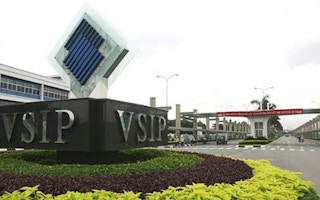The southern province of Binh Duong is cleaning up its environment by adopting stringent industrial pollution regulations and also enforcing them.
Vo Thi Ngoc Hanh, deputy director of the south-eastern province’s Department of Natural Resources and Environment, said in recent years industries have been persuaded to open in industrial parks and zones.
The province has not solicited investment in polluting industries like textiles, dyeing, and tanning, she said.
In fact, since 2006 it has refused licences to seven projects for failing to meet environmental standards.
Authorities are also providing support to polluting companies by helping them treat their waste or relocate to permitted areas.
The province has also created infrastructure like drainage systems at industrial parks and clusters.
Binh Duong has 28 industrial parks, 24 of them operational with 1,200 factories, according to the People’s Committee.
Of the operating ones, 20 have waste water treatment systems and three others are building them.
The average rate of companies connecting their waste water system to the park’s system is 92 per cent, with several reporting 100 per cent.
But the task of protecting the environment from industrial waste still faces many problems, Hanh said.
For instance, infrastructure outside industrial parks, especially drainage systems, has not kept pace, she said.
Thus, waste water discharged by some industrial parks are not carried away, causing pollution of water bodies like Ba Bo Canal, Bung Cu and Siep springs.
The rate of industrial parks that release waste water exceeding permitted pollution levels is 38 per cent.
Only one of the province’s eight industrial clusters has built a waste water treatment system.
Of the eight — totally measuring over 600ha – only three have fully leased out their space while the other five are still clearing land.
Most factories situated in industrial clusters treat their waste water before sending it into the clusters’ treatment plants.
Only 20 per cent of companies not located in industrial parks and clusters treat waste water to meet specifications.
Companies located near or in residential areas do not treat their gaseous wastes before discharge, affecting the lives of nearby residents.
Industries daily discharge up to 883 tonnes of solid waste, including 169 tonnes of toxic waste. Most of the solid waste is not treated thoroughly.










